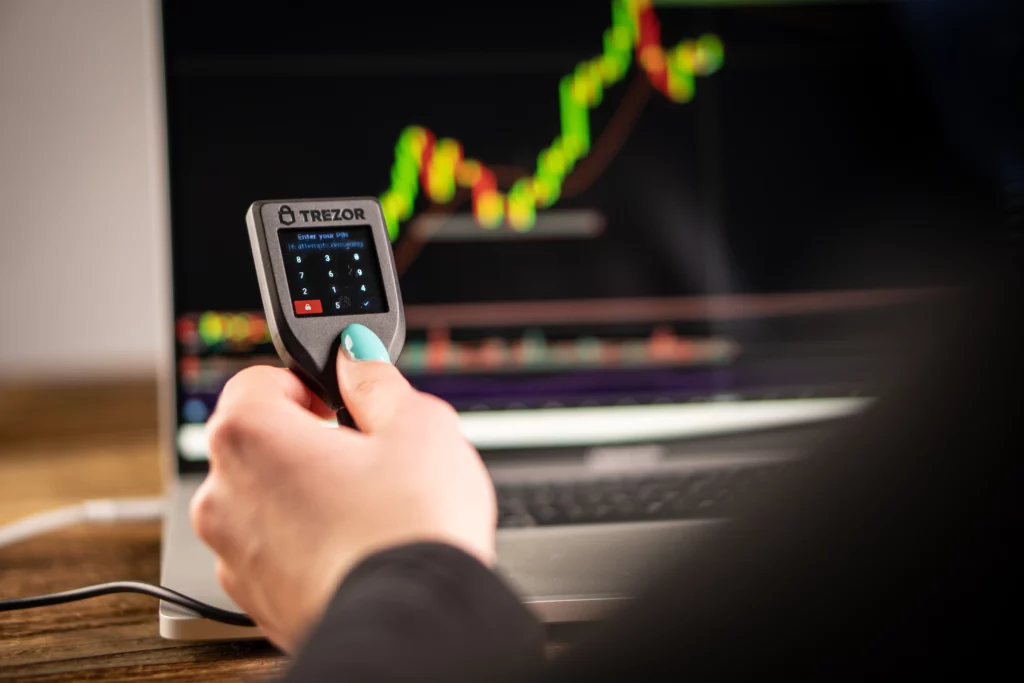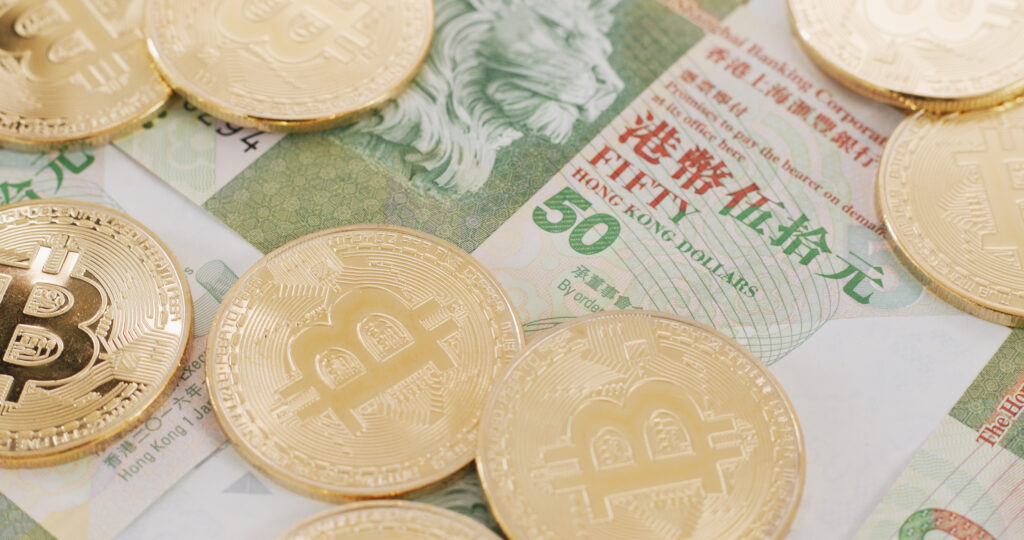Crypto derivatives trading on centralised exchanges surged to more than US$3 trillion in July 2022. Market experts, analysts, investors, and enthusiasts – all relevant stakeholders in the crypto space are strongly attentive to derivatives as they occupy the majority of crypto volumes globally.
In July 2022, the derivatives market was responsible for nearly 70% of total crypto volumes. Derivatives exchanges traded close to US$245 billion on July 29th 2022, almost 10% higher than June’s top daily high of US$223 billion.
All these numbers indicate that crypto derivatives are expanding in length and breadth. But what are these crypto derivatives, and why do they have such a significant hold over the crypto volumes worldwide? Here, we take a step-by-step approach to get to the bottom of these questions.
What are Crypto Derivatives?
Derivatives are financial contracts whose value depends on an underlying asset, group of assets or benchmark. These contracts may work between two or more parties and are tradable on an exchange or over the counter. One can use these contracts to trade any number of assets. The primary purpose of trading in derivatives is to access certain markets and hedge against future risks.
While derivatives have existed for a long time in the world of traditional finance, it is making a notable penetration into the crypto industry, as we have seen already.
Crypto derivatives stand on the same founding philosophies that hold traditional finance derivatives as a category. In traditional finance, the underlying assets from which derivatives draw their value could be stocks, bonds, interest rates, commodities, fiat currencies, etc. For cryptocurrencies, the underlying asset could be a crypto one. For instance, an Ethereum derivative would imply that the instrument derives its value from the value of Ethereum.
Crypto Derivative Types

The broad classification of crypto derivatives involves three categories: Crypto Futures, Crypto Options, and Perpetual Contracts.
Trading Mechanism: Crypto Futures
Crypto futures are contracts or agreements between parties – a buyer and a seller – to buy and sell a crypto asset at a pre-decided price at a specific date in the future. The contract is generally settled in fiat currency, USD, to be more specific. However, it could be done in any other currency if such is the agreement or contract between the parties.
Suppose a buyer has purchased a Bitcoin Futures worth one Bitcoin, and the price of Bitcoin then is $30,000. Whatever the increase or decrease in Bitcoin prices at the time of the contract’s closure would be the gain or loss of the buyer.
If the price goes up to $40,000, the buyer will make a gain of $10,000 with the expiry of the contract. And if it goes down to $20,000, the buyer will lose $10,000. Crypto futures generally come with durations of a week, two weeks, a quarter, and more.
Trading Mechanism: Crypto Options
Options are contracts that allow traders to buy or sell a specific asset at a predefined price on a future date. However, the crucial distinction in the case of options is that, unlike futures, they allow the buyer to not buy the asset if they choose to. There are two types of options: Call and Put options and American and European options.
Call options allow traders to purchase an asset on a given date, and put options allow them to sell on a given date. American options allow selling before the contract’s expiry date, while European options require selling on the exact agreed date.
In crypto options, traders need to pay a fee to buy a contract and irrespective of the outcome, the fee must be paid.
Let’s try to understand through an example how crypto options work. If a buyer has entered a call option for a crypto asset at $30,000 and finds the price dropped to $25,000 on the agreed date, the option contract saves the buyer from incurring a $5,000 loss. The buyer, at this point, can exercise the right not to fulfil the contract. However, the buyer would not get a refund for the price paid to buy the contract.
Trading Mechanism: Perpetual Contracts
Perpetual contracts are also known as perpetual futures contracts or perpetual swaps. Unlike other derivatives, like crypto futures and crypto options, perpetual contracts do not come with an expiry date. And that’s why the term perpetual is used to signify these contracts – something the buyer can keep or hold for as long as they want. To keep the contract open for as long as the buyer/trader wants, a holding fee, known as the funding rate, must be paid.
Now that we’ve discussed the broad categories for derivatives let us try to understand their use cases in the real crypto market.
What are Crypto Derivatives Used For?

Derivatives help an investor safeguard their investments from future price volatility risks. Hedging, for instance, is a well-tested way that leverages derivatives to manage risk. A trader who has bought a crypto asset in the spot market always stands the risk of losing money if the price drops. However, if the trader adopts a short futures position for the same asset, it could help him offset the losses incurred from the spot position.
Crypto derivatives can also help investors earn an income. Sellers of options can receive a premium from buyers in the form of contract fees. Some traders may also earn by receiving funding rates, as discussed already, by entering into crypto perpetual futures contracts.
The Advantages of Crypto Derivatives
Attaining significant levels of liquidity is essential for any market to grow. After all, the levels of liquidity in a market highlight the volume of buyers and sellers present in the market and how easily transactions happen in the market.
Any market that lacks liquidity implies a limited number of transactions and limited participation from investors. A liquid market, on the other hand, witnesses robust supply-demand dynamics. With their risk-mitigating capacity, Crypto derivatives enhance the ease and confidence with which new investors and traders participate in the market.
Talking about risk mitigation, derivatives help protect investors’ assets by hedging against future fluctuations in prices. The crypto market is an emergent and evolving one in nature. Price fluctuations are unavoidable for any market that has grown this fast. Derivatives ensure that investors are secure to a large extent by reducing their exposure to volatility risks.
Derivatives also make market trading sophisticated, where investors can deploy a mix of strategies. The traders can diversify their portfolios by getting into multiple crypto assets.
Due to derivatives, the trading market also becomes more efficient. Setting up contracts at a given price on a given date drives a search for an asset’s correct price, which is a function of multiple factors, including liquidity, market structure, and information flow. This price discovery is a process that ends up correcting the market, making it more efficient than before.
Challenges in the Crypto Derivatives Market

If the value of the underlying crypto asset fluctuates significantly, the derivative contract built on top of it will also fluctuate significantly. Therefore, one has to be careful of the core asset while picking up a derivative.
Crypto assets belong to an emerging field, and the regulations defining their behaviour are not the same across different regions worldwide. As such, while entering a future-looking agreement with a counterparty, both parties must ensure that their legal jurisdictions have the same take on crypto derivative trading.
Since crypto assets are a relatively new asset class, derivatives built on these assets should be going through due diligence. However, the lack of due diligence in over-the-counter transactions may result in adverse results, reducing trust in the overall system.
How to Efficiently Trade Crypto Derivatives?
There are different derivative trading strategies in the market. Knowing the correct deployment strategies would require experience in investing. However, when the market is on the rise and sentiments are bullish, the usual strategy is to go with an options contract. For a bearish market, the strategy should be a futures contract. And in a market where a clear trend is not visible – traders can always opt for perpetual contracts.









